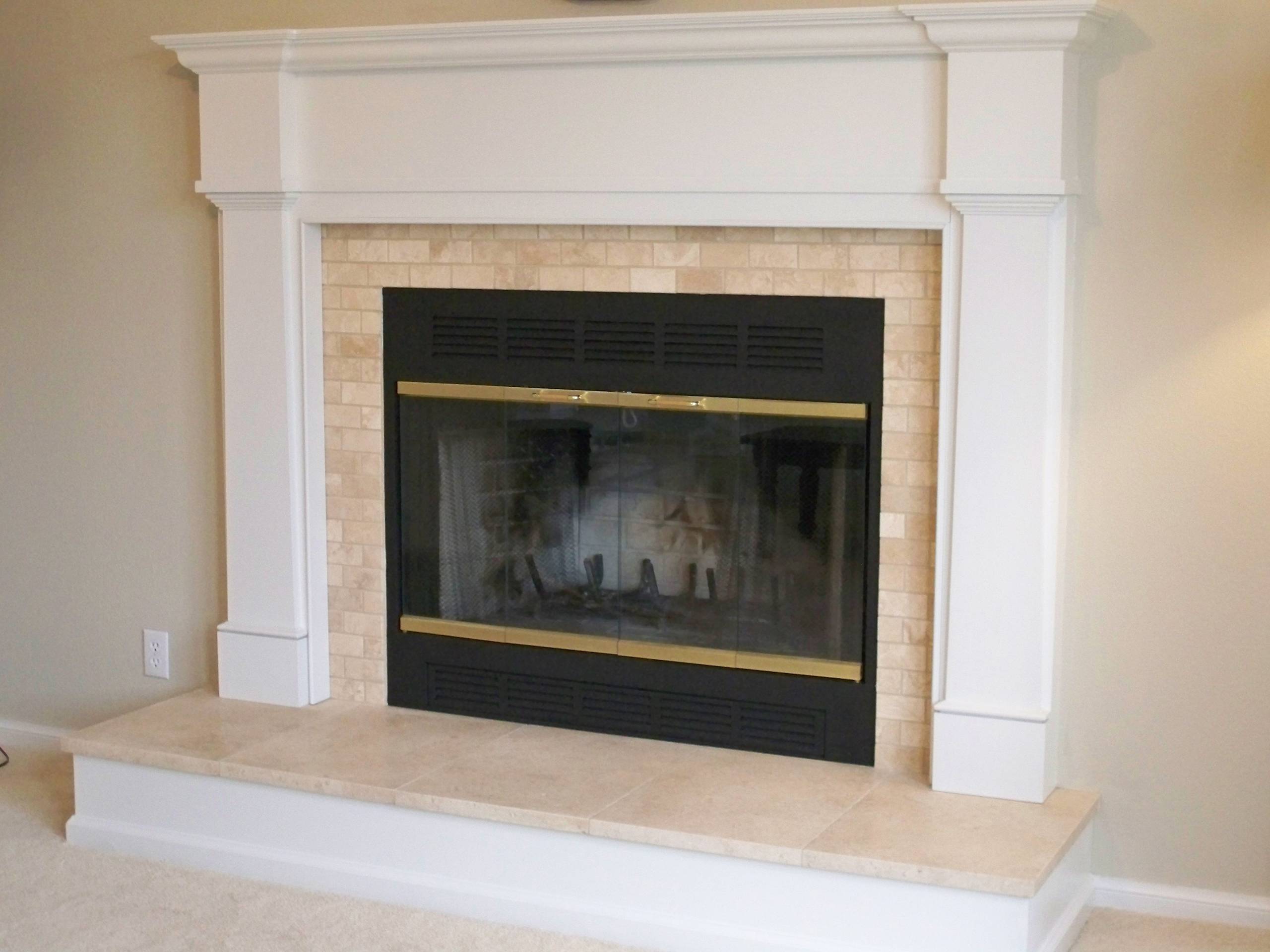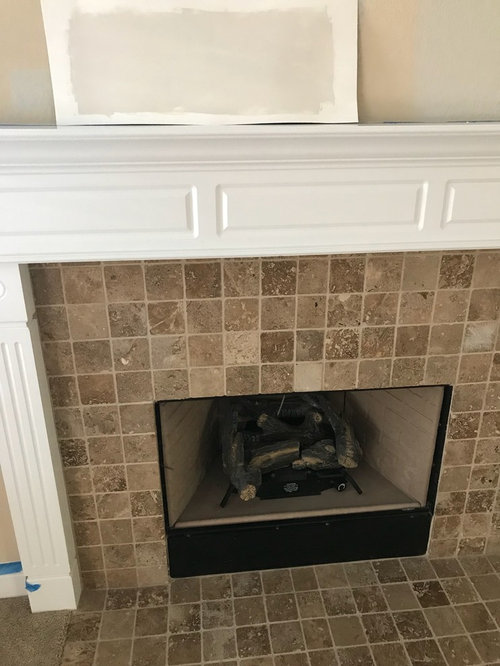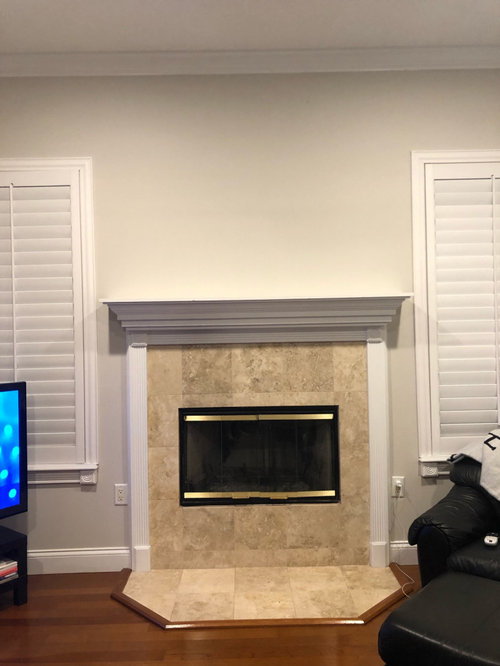A travertine tile fireplace surround brings natural beauty and sophisticated charm to any living space. This sedimentary stone, formed by mineral deposits from hot springs, offers unique textures and warm earth tones that complement both traditional and contemporary designs. Each tile’s distinctive pitting and veining patterns ensure no two surrounds look exactly alike, creating a one-of-a-kind focal point. Travertine’s natural durability and heat resistance make it particularly suitable for fireplace applications, standing up to temperature fluctuations while maintaining its aesthetic appeal. Homeowners can choose from various finishes, from polished smoothness to textured tumbled edges, to achieve their desired look. With proper selection and installation, a travertine surround becomes a lasting investment that elevates the entire room’s ambiance.
Advantages of Travertine for Fireplaces
Travertine’s natural thermal properties make it ideal for fireplace surrounds. The stone absorbs and radiates heat evenly, helping maintain comfortable room temperatures. Its density provides excellent protection against sparks and embers from wood-burning fires. Unlike some materials that can crack under intense heat, properly installed travertine withstands the temperature variations common around fireplaces.
The stone’s natural variations offer visual depth that manufactured materials can’t replicate. Earthy tones ranging from creamy ivories to rich golds and warm rusts create organic warmth in living spaces. Travertine’s characteristic holes and linear patterns add textural interest that changes with lighting throughout the day. These natural imperfections become design features rather than flaws, contributing to the surround’s artisanal quality.
From a practical standpoint, travertine provides lasting value with relatively low maintenance. The dense stone resists staining when properly sealed, and its natural color variations help disguise minor wear. Unlike high-gloss materials that show fingerprints and dust, travertine’s matte surfaces maintain their appearance between cleanings. Its timeless appeal ensures the surround won’t appear dated as design trends evolve.
Selecting the Right Travertine Tile
Consider the tile finish based on your desired aesthetic and maintenance preferences. Honed travertine offers a smooth, matte surface that highlights the stone’s natural coloring without high reflection. Tumbled finishes provide more texture with softened edges for rustic appeal. Polished travertine delivers formal elegance with its glossy surface, though this may require more frequent cleaning to maintain shine.
Tile size significantly impacts the surround’s overall appearance. Large-format tiles (16×16 inches or bigger) create clean lines with minimal grout, ideal for contemporary spaces. Smaller tiles (4×4 inches) work well for intricate patterns or mosaic designs. Consider the fireplace’s proportions—larger surrounds can accommodate bigger tiles without looking out of scale. Mixing different sizes creates dynamic visual interest.
Pay attention to the tile’s grade and filling. Commercial-grade travertine withstands heavy use better than lighter residential grades. Filled travertine has surface holes filled with resin or cement for a more uniform look, while unfilled varieties showcase the stone’s natural porosity. Decide whether you prefer the authentic, textured appearance of unfilled stone or the smoother surface of filled tiles.

Design and Pattern Options
Classic stacked stone patterns create timeless appeal using rectangular travertine tiles. This installation method mimics natural stonework, with either uniform or varied tile heights for added dimension. Stacked patterns work particularly well for floor-to-ceiling surrounds, drawing the eye upward. Using tiles with consistent coloring produces a cohesive look, while mixing tones adds rustic character.
Herringbone and chevron layouts introduce dynamic movement to the fireplace wall. These patterns require precisely cut travertine tiles but deliver striking geometric impact. Consider using slightly contrasting grout colors to emphasize the pattern’s lines. Such designs work especially well with neutral-toned travertine in contemporary or transitional spaces.
For Mediterranean or Old World styles, consider a mixed mosaic approach. Combine different travertine tile shapes (hexagons, circles, squares) in complementary shades. Add decorative accent pieces like carved rosettes or border tiles for architectural detail. This approach creates artisanal charm that becomes the room’s centerpiece. Balance busy patterns with simpler wall treatments elsewhere in the space.
Installation Considerations
Proper substrate preparation ensures long-lasting results. The wall surface must be flat, clean, and structurally sound before installation. For masonry fireplaces, repair any cracks or uneven areas with appropriate patching compounds. Over drywall or wood framing, install cement backer board as a stable base for the tiles. Check that all surfaces are plumb and level—travertine’s weight can exacerbate underlying imperfections.
Select thinset mortar specifically formulated for natural stone. Travertine’s porosity requires a medium-bed mortar that accommodates slight variations in tile thickness. Apply mortar evenly using a notched trowel, working in manageable sections. Butter the back of each tile with additional mortar to ensure full coverage, especially important for unfilled travertine with surface voids.
Spacing and grout selection significantly impact the final appearance. Narrow grout lines (1/8 inch) create a seamless look with filled travertine, while wider joints (3/8 inch) complement unfilled stone’s rustic character. Use unsanded grout for joints smaller than 1/8 inch to prevent scratching softer travertine edges. Allow adequate curing time before applying sealant or exposing the surround to heat.
Sealing and Maintenance
Apply a high-quality penetrating sealer before grouting to protect the porous stone. Choose a sealer that doesn’t alter travertine’s natural color while providing stain resistance. Pay special attention to filling surface holes in unfilled tiles—these areas absorb more sealer and may require additional coats. Allow proper drying time between applications as specified by the manufacturer.
Regular cleaning preserves travertine’s beauty without damaging the surface. Use pH-neutral stone cleaners and soft cloths or brushes for routine maintenance. Immediately wipe up acidic spills like wine or citrus juices to prevent etching. Avoid abrasive cleaners or tools that could scratch the relatively soft stone. Reapply sealant every 1-3 years depending on usage and product specifications.
Address minor damage promptly to prevent worsening. Small chips can often be repaired with color-matched stone epoxy. For stubborn stains, create a poultice using baking soda and water to draw out discoloration. Have professional stone restoration specialists address significant etching or deep stains. With proper care, a travertine surround maintains its elegance for decades.
Complementing Design Elements
Coordinate the travertine surround with other stone elements in the room for a cohesive look. Repeat similar tones in flooring, countertops, or accent walls. If using multiple stone types, ensure their undertones harmonize—pair warm travertine with other earth-toned materials rather than cool grays.
Choose a mantel that complements the travertine’s character. Dark wood mantels create striking contrast against light travertine, while metal mantels enhance contemporary installations. For rustic designs, consider a reclaimed wood beam that echoes the stone’s organic texture. Ensure proper clearance between combustible mantel materials and the firebox opening.
Accessorize thoughtfully to highlight the surround’s natural beauty. Simple wrought iron tools keep focus on the stone’s texture, while minimalist decor prevents visual competition. Use lighting strategically—wall sconces or recessed lights can accentuate the travertine’s dimensional qualities at night.
A travertine tile fireplace surround offers enduring beauty that transcends passing design trends. Its natural variations and warm tones create inviting focal points that enhance any decor style. By selecting appropriate tile characteristics and installation methods, homeowners ensure both aesthetic appeal and practical performance. While requiring some maintenance, travertine’s longevity and timeless elegance justify the investment. The stone’s ability to harmonize with various materials allows for creative design expressions that reflect personal taste. Whether aiming for rustic charm or refined luxury, a travertine surround becomes more than just a fireplace feature—it transforms into a handcrafted work of natural art that gathers families and guests for years to come. With proper care and occasional refreshing, this classic material continues to reveal new depths of character over time.
Fireplace surround ideas, best stone choices, installation and tips
Travertine Fireplace ! Contemporary fireplace, Fireplace design
San Diego Tile Fireplace Photos – Custom Masonry and Fireplace
Travertine tile fireplace dilemma!
Iceland 6″ x 24″ Natural Stone Travertine Tile
Travertine fireplace definition, Design ideas and tile types
San Diego Tile Fireplace Photos – Custom Masonry and Fireplace
Related Posts:











